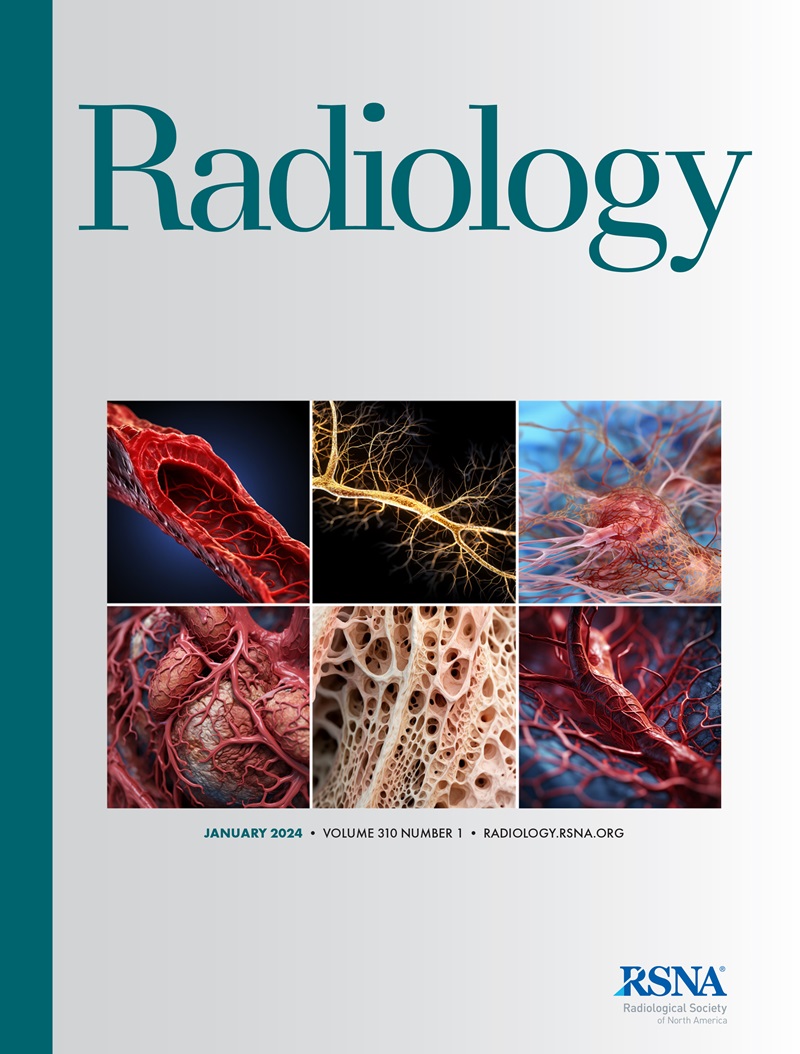求助PDF
{"title":"利用 CT 血管造影分割和检测脑动脉瘤的知识增强型深度学习:一项多中心研究。","authors":"Jianyong Wei, Xinyu Song, Xiaoer Wei, Zhiwen Yang, Lisong Dai, Mengfei Wang, Zheng Sun, Yidong Jin, Chune Ma, Chunhong Hu, Xueqian Xie, Zhenghan Yang, Yonggao Zhang, Fajin Lv, Jie Lu, Yueqi Zhu, Yuehua Li","doi":"10.1148/radiol.233197","DOIUrl":null,"url":null,"abstract":"<p><p>Background Deep learning (DL) could improve the labor-intensive, challenging processes of diagnosing cerebral aneurysms but requires large multicenter data sets. Purpose To construct a DL model using a multicenter data set for accurate cerebral aneurysm segmentation and detection on CT angiography (CTA) images and to compare its performance with radiology reports. Materials and Methods Consecutive head or head and neck CTA images of suspected unruptured cerebral aneurysms were gathered retrospectively from eight hospitals between February 2018 and October 2021 for model development. An external test set with reference standard digital subtraction angiography (DSA) scans was obtained retrospectively from one of the eight hospitals between February 2022 and February 2023. Radiologists (reference standard) assessed aneurysm segmentation, while model performance was evaluated using the Dice similarity coefficient (DSC). The model's aneurysm detection performance was assessed by sensitivity and comparing areas under the receiver operating characteristic curves (AUCs) between the model and radiology reports in the DSA data set with use of the DeLong test. Results Images from 6060 patients (mean age, 56 years ± 12 [SD]; 3375 [55.7%] female) were included for model development (training: 4342; validation: 1086; and internal test set: 632). Another 118 patients (mean age, 59 years ± 14; 79 [66.9%] female) were included in an external test set to evaluate performance based on DSA. The model achieved a DSC of 0.87 for aneurysm segmentation performance in the internal test set. Using DSA, the model achieved 85.7% (108 of 126 aneurysms [95% CI: 78.1, 90.1]) sensitivity in detecting aneurysms on per-vessel analysis, with no evidence of a difference versus radiology reports (AUC, 0.93 [95% CI: 0.90, 0.95] vs 0.91 [95% CI: 0.87, 0.94]; <i>P</i> = .67). Model processing time from reconstruction to detection was 1.76 minutes ± 0.32 per scan. Conclusion The proposed DL model could accurately segment and detect cerebral aneurysms at CTA with no evidence of a significant difference in diagnostic performance compared with radiology reports. © RSNA, 2024 <i>Supplemental material is available for this article.</i> See also the editorial by Payabvash in this issue.</p>","PeriodicalId":20896,"journal":{"name":"Radiology","volume":null,"pages":null},"PeriodicalIF":12.1000,"publicationDate":"2024-08-01","publicationTypes":"Journal Article","fieldsOfStudy":null,"isOpenAccess":false,"openAccessPdf":"","citationCount":"0","resultStr":"{\"title\":\"Knowledge-Augmented Deep Learning for Segmenting and Detecting Cerebral Aneurysms With CT Angiography: A Multicenter Study.\",\"authors\":\"Jianyong Wei, Xinyu Song, Xiaoer Wei, Zhiwen Yang, Lisong Dai, Mengfei Wang, Zheng Sun, Yidong Jin, Chune Ma, Chunhong Hu, Xueqian Xie, Zhenghan Yang, Yonggao Zhang, Fajin Lv, Jie Lu, Yueqi Zhu, Yuehua Li\",\"doi\":\"10.1148/radiol.233197\",\"DOIUrl\":null,\"url\":null,\"abstract\":\"<p><p>Background Deep learning (DL) could improve the labor-intensive, challenging processes of diagnosing cerebral aneurysms but requires large multicenter data sets. Purpose To construct a DL model using a multicenter data set for accurate cerebral aneurysm segmentation and detection on CT angiography (CTA) images and to compare its performance with radiology reports. Materials and Methods Consecutive head or head and neck CTA images of suspected unruptured cerebral aneurysms were gathered retrospectively from eight hospitals between February 2018 and October 2021 for model development. An external test set with reference standard digital subtraction angiography (DSA) scans was obtained retrospectively from one of the eight hospitals between February 2022 and February 2023. Radiologists (reference standard) assessed aneurysm segmentation, while model performance was evaluated using the Dice similarity coefficient (DSC). The model's aneurysm detection performance was assessed by sensitivity and comparing areas under the receiver operating characteristic curves (AUCs) between the model and radiology reports in the DSA data set with use of the DeLong test. Results Images from 6060 patients (mean age, 56 years ± 12 [SD]; 3375 [55.7%] female) were included for model development (training: 4342; validation: 1086; and internal test set: 632). Another 118 patients (mean age, 59 years ± 14; 79 [66.9%] female) were included in an external test set to evaluate performance based on DSA. The model achieved a DSC of 0.87 for aneurysm segmentation performance in the internal test set. Using DSA, the model achieved 85.7% (108 of 126 aneurysms [95% CI: 78.1, 90.1]) sensitivity in detecting aneurysms on per-vessel analysis, with no evidence of a difference versus radiology reports (AUC, 0.93 [95% CI: 0.90, 0.95] vs 0.91 [95% CI: 0.87, 0.94]; <i>P</i> = .67). Model processing time from reconstruction to detection was 1.76 minutes ± 0.32 per scan. Conclusion The proposed DL model could accurately segment and detect cerebral aneurysms at CTA with no evidence of a significant difference in diagnostic performance compared with radiology reports. © RSNA, 2024 <i>Supplemental material is available for this article.</i> See also the editorial by Payabvash in this issue.</p>\",\"PeriodicalId\":20896,\"journal\":{\"name\":\"Radiology\",\"volume\":null,\"pages\":null},\"PeriodicalIF\":12.1000,\"publicationDate\":\"2024-08-01\",\"publicationTypes\":\"Journal Article\",\"fieldsOfStudy\":null,\"isOpenAccess\":false,\"openAccessPdf\":\"\",\"citationCount\":\"0\",\"resultStr\":null,\"platform\":\"Semanticscholar\",\"paperid\":null,\"PeriodicalName\":\"Radiology\",\"FirstCategoryId\":\"3\",\"ListUrlMain\":\"https://doi.org/10.1148/radiol.233197\",\"RegionNum\":1,\"RegionCategory\":\"医学\",\"ArticlePicture\":[],\"TitleCN\":null,\"AbstractTextCN\":null,\"PMCID\":null,\"EPubDate\":\"\",\"PubModel\":\"\",\"JCR\":\"Q1\",\"JCRName\":\"RADIOLOGY, NUCLEAR MEDICINE & MEDICAL IMAGING\",\"Score\":null,\"Total\":0}","platform":"Semanticscholar","paperid":null,"PeriodicalName":"Radiology","FirstCategoryId":"3","ListUrlMain":"https://doi.org/10.1148/radiol.233197","RegionNum":1,"RegionCategory":"医学","ArticlePicture":[],"TitleCN":null,"AbstractTextCN":null,"PMCID":null,"EPubDate":"","PubModel":"","JCR":"Q1","JCRName":"RADIOLOGY, NUCLEAR MEDICINE & MEDICAL IMAGING","Score":null,"Total":0}
引用次数: 0
引用
批量引用


